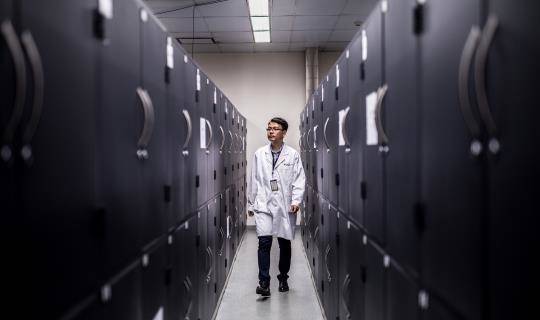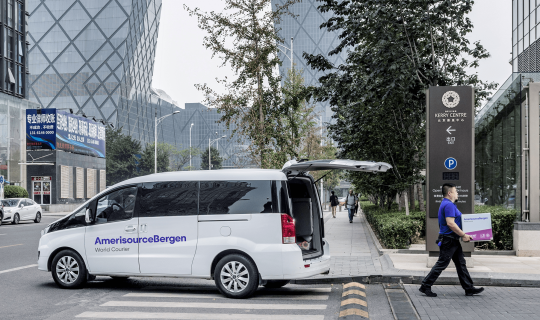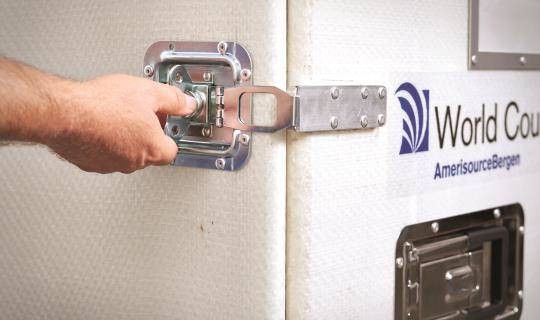Article: World in Motion
By World Courier
This article first appeared on the International Clinical Trials, May 2015.
Failure: what a nasty word, and one that can keep even the most hardened professional awake at night. Is this because your shipment is stuck in customs in a non-temperature controlled area and there are no signs of when it will be released? Is it because difficult countries were selected for the clinical trial, and the import permits have not been issued to allow shipping and clearance to take place? Is getting ethics approval the worst part in arranging for a trial in Asia or Latin America? Could we collectively do anything to reduce the chances of failure and improve success rates?
When it comes to speciality logistics, the world may be growing smaller but that does not mean it is any less complex. Pharmaceutical manufacturers conduct clinical trials globally in an effort to reach new populations and gain greater cost efficiencies. However, many of these advantages can be diminished — or wiped away entirely — if the transportation of products, supplies and samples are disrupted.
The international pharma industry spent $8 billion on cold chain logistics in 2014. This figure demonstrates that as R&D grows, so too does logistics. As products evolve, there is a demand for more targeted therapies and targeted logistics solutions, particularly in the clinical trials arena. That means a need for customisation of everything from study samples to packaging to monitoring. Understanding market dynamics and the global supply chain requires a closer look at where manufacturers may find solutions that meet their logistics needs.
Integrity of Supply
Put simply, it is imperative that supplies of drugs, vaccines and ancillaries arrive on time at the right place, with no temperature excursions and with the ability to be used for the patient. Responsibility for this falls on the shoulders of the clinical trial supply professional.
Integrity and continuity of supply are paramount to running a successful trial while ensuring patient safety. This cannot be achieved without timely shipments which have stayed at the correct temperature throughout their journey. However, this does not necessarily have to mean fast shipments, so long as care is taken in the planning stages to ensure expectations are met over transit and clearance times; and that storage is maintained at the correct temperature while clearance and/or regulatory inspections are taking place. Integrity trumps speed most of the time.

Technology Tools
That being said, there is usually a time element involved, especially when investigator sites are poised and ready to enrol patients — so anything which reduces delays should be used where possible. This can include linking technology with temperature monito
rs, such as integrated voice and web response system registration. There are plenty of tools to help, and cloud-based technology for uploading data from the shipment directly at the consignee site can make all the difference to releasing drugs for application.
Being able to understand and switch between the macro and micro levels is crucial. Monitoring a whole pallet is easy; global positioning systems that can be used during air transport are one of the newest technologies on the temperature-control market. This technology is switched off and on during take-off and landing, but is actively reading at all times and sending the location of the package.
While geo-temp technology has a long way to go beyond its function as an alarm system, this is an innovation the transport world is excited about. When we get to the final delivery, these are simply not practical or cost-effective for most shipments. Using a simple TempTale or Elpro device is usually a better option, even if the location visibility is no longer available.
Where To Go?
There are no wrong countries, but there are those which may not repay investment in set-up costs and regulatory wrangling, and logistical challenges with sufficient patients/ subjects. The difficulty of supplying materials to sites must be part of the consideration as to what is worthwhile. Exacting knowledge of regulations is extremely important for successful shipping and, ultimately, for trial initiation. Sending into traditional markets in the developed world is often simpler as there are mature and generally harmonised regulations.
When entering into new countries, particularly in the developing world, familiarity with the complex requirements is needed. This can be greatly facilitated by having local representation with local personnel who understand the regulations and language, and are operating in the correct timezone.They may also be used as the importer of record to act as the legal entity to apply for paperwork, tax provisions, and to provide information and documentation for clearance demands.
As well as knowing and applying regulatory burdens, working with an understanding of the local cultural norms is key. India is often cited as a problem destination where issues like patient literacy, socioeconomic issues and social cultural norms — including gender differentiation — should be taken into account when developing procedures and guidelines.
There are a number of things which can be preplanned to help avoid complications — such as deciding early on what material is going to be sent, rather than being sourced locally, and how it may be classified.
Some countries make it very difficult to send ancillaries. It can be a tough task to clear through customs items like needles, syringes, thermometers and electronic case report forms; much depends on the destination country and how the items are declared. Local contacts can normally advise on how best to declare materials to comply with national requirements in order to get import permits/licences issued.

Temperature Control
Transport partners are increasingly seeing requests for temperature ranges that fall outside the 'cold' environment, such as ambient/room temperature, or body temperature demands for products that use the body’s own substances (blood, tissue, etc) to fight disease. Good Distribution Practice regulations are evolving as regulators demand temperature control throughout the whole supply chain. Drugs now contain more and more high-value active pharmaceutical ingredients with a shorter shelf-life and strict temperature requirements, and pharma is seeing a range of temperature needs enter the supply chain.The industry is moving away from the term 'cold chain' towards the more inclusive phrase 'temperature-controlled transport'.
Choosing the right packaging for whatever temperature range you need makes all the difference in getting the shipping temperature correct. There are plenty of options with varying costs, from simple water-based gel packs
in a polystyrene box, to vacuum-insulated panel boxes with phase-change material coolant blocks, up to active shipping systems, such as Envirotainers and C-Safe containers, capable of taking pallets of material. There is no single correct choice, as there are many factors to consider – for instance, the origin and destination, temperature range, size of the shipment, and contents. Packaging manufacturers have conducted extensive tests and have data available which, when used in conjunction with the advice of a logistics provider or freight forwarder, can help with selecting the most appropriate packaging for the individual shipment.
China Growth
In China, for example, the administration is working to a target 90-day process for clinical trial approval — including scientific review and ethics approval — but this is not always met. Typically, it takes between three and six months to complete the process and achieve all the necessary documents to actually import clinical supplies into the country. The requirements of import permits must be followed carefully. If they are issued by the Beijing Food and Drug Administration, then importing should be done through Beijing. Using a different port of entry will lead to complications and the likelihood of delays — and all that entails.
The timescales may seem long and lead you to question whether it is worth going to China, but bear in mind that there is a requirement to complete a clinical trial in the country before drugs can be marketed after regulatory approval. By 2016, the value of pharmaceutical sales in China is expected to be greater than that of Japan — currently the world’s second-largest market (1).
There are ways to control shipments, and our access to and visibility of them throughout the supply chain. Using tools and working with experienced partners makes all the different in both planning and implementation.




